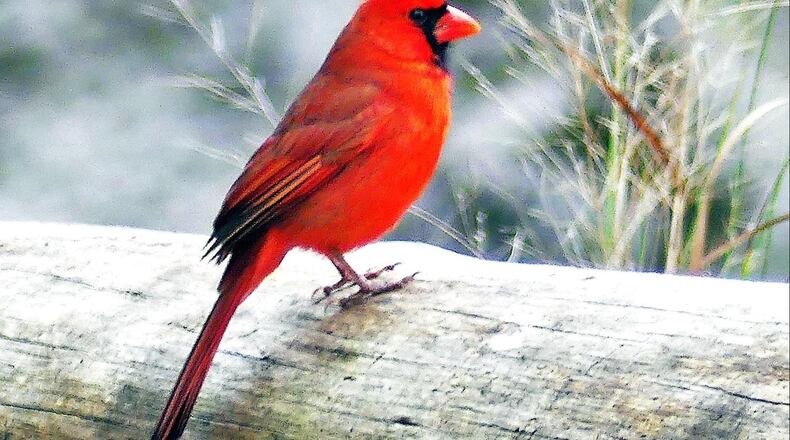Charles Seabrook’s “Wild Georgia” column appears weekly in The Atlanta Journal-Constitution.
Valentine’s Day, coming up next Friday, marks February as the month for celebrating love. It’s also the month when several bird species start declaring their intentions with song, house hunting and aerial displays. Here’s a look at some of them.
Northern cardinals. All winter, cardinals have been communicating with each other through chip calls that alert them to food sources or warn of predators. But in early February, with days getting longer, male cardinals burst into springtime song with variations of their ear-catching "cheer, cheer, cheer" tunes. Females often answer their mates with songs of their own. Other birds starting to sing now are Carolina wrens, tufted titmice and Carolina chickadees.
Eastern bluebirds. February is said to be bluebird month because it's when bluebird pairs earnestly start checking out nesting sites. A rule of thumb is that bluebird houses should be cleaned and ready for the birds by Valentine's Day. Many bluebirds may be nesting by month's end. Carolina wrens, titmice, chickadees and nuthatches also are checking out nesting sites now.
Purple martins. The first wave of martins is arriving in Georgia from winter homes as far south as Peru, making them the first migratory songbirds to return for spring nesting. Soon, martins will be setting up housekeeping in gourds and martin houses that people provide for them. It may be two months or so before the first big waves of other migratory songbirds — warblers, ruby-throated hummingbirds and others — return.
Eagles, owls, ospreys, hawks and others. Bald eagles are tending babies in their nests. Great horned owl babies are hatching out. Barred owls and ospreys are beginning to nest. Red-shouldered hawks, red-tailed hawks and American woodcocks may be seen diving and soaring while performing their amazing aerial courtships.
The Great Backyard Bird Count is next weekend, Feb. 14-17. To participate, visit gbbc.birdcount.org.
IN THE SKY: From David Dundee, Tellus Science Museum astronomer: The moon is full on Saturday night — the "Bony Moon," as the Cherokee peoples called February's full moon. Venus is low in the west just after dark and sets about two hours later. Mars, Jupiter and Saturn are low in the east about two hours before dawn.
About the Author
Keep Reading
The Latest
Featured


